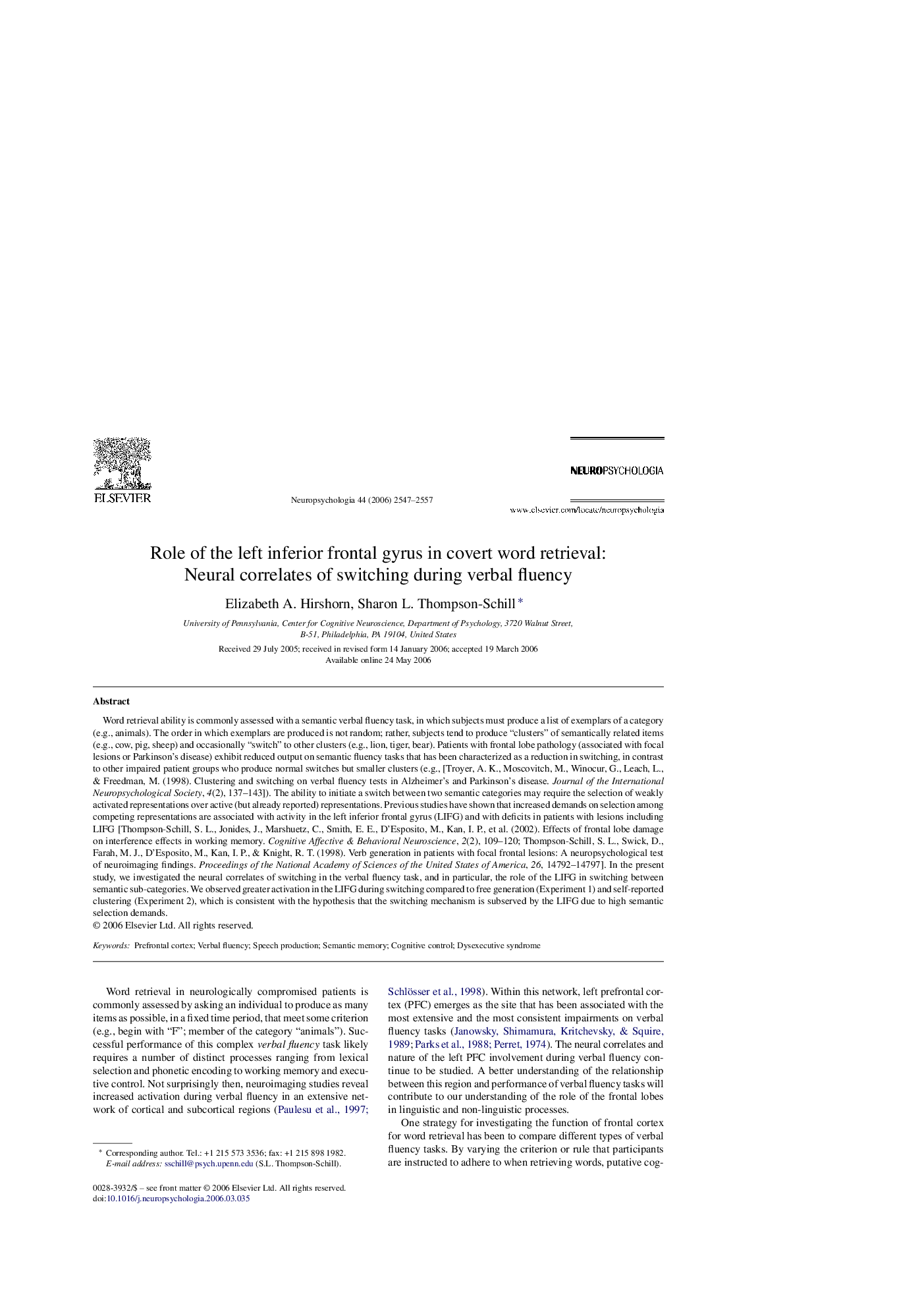| Article ID | Journal | Published Year | Pages | File Type |
|---|---|---|---|---|
| 945928 | Neuropsychologia | 2006 | 11 Pages |
Word retrieval ability is commonly assessed with a semantic verbal fluency task, in which subjects must produce a list of exemplars of a category (e.g., animals). The order in which exemplars are produced is not random; rather, subjects tend to produce “clusters” of semantically related items (e.g., cow, pig, sheep) and occasionally “switch” to other clusters (e.g., lion, tiger, bear). Patients with frontal lobe pathology (associated with focal lesions or Parkinson's disease) exhibit reduced output on semantic fluency tasks that has been characterized as a reduction in switching, in contrast to other impaired patient groups who produce normal switches but smaller clusters (e.g., [Troyer, A. K., Moscovitch, M., Winocur, G., Leach, L., & Freedman, M. (1998). Clustering and switching on verbal fluency tests in Alzheimer's and Parkinson's disease. Journal of the International Neuropsychological Society, 4(2), 137–143]). The ability to initiate a switch between two semantic categories may require the selection of weakly activated representations over active (but already reported) representations. Previous studies have shown that increased demands on selection among competing representations are associated with activity in the left inferior frontal gyrus (LIFG) and with deficits in patients with lesions including LIFG [Thompson-Schill, S. L., Jonides, J., Marshuetz, C., Smith, E. E., D’Esposito, M., Kan, I. P., et al. (2002). Effects of frontal lobe damage on interference effects in working memory. Cognitive Affective & Behavioral Neuroscience, 2(2), 109–120; Thompson-Schill, S. L., Swick, D., Farah, M. J., D’Esposito, M., Kan, I. P., & Knight, R. T. (1998). Verb generation in patients with focal frontal lesions: A neuropsychological test of neuroimaging findings. Proceedings of the National Academy of Sciences of the United States of America, 26, 14792–14797]. In the present study, we investigated the neural correlates of switching in the verbal fluency task, and in particular, the role of the LIFG in switching between semantic sub-categories. We observed greater activation in the LIFG during switching compared to free generation (Experiment 1) and self-reported clustering (Experiment 2), which is consistent with the hypothesis that the switching mechanism is subserved by the LIFG due to high semantic selection demands.
